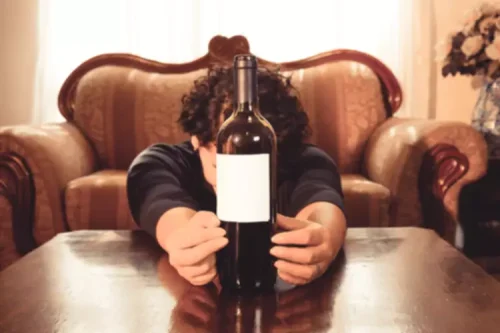
Read about one youth’s experience in AmeriCorps National Civilian Community Corps (NCCC). Do not dispose of medications by flushing them down the toilet or pouring them down the sink. Medications can be crushed and mixed into the trash (to keep them away from children and pets) or returned to your local pharmacy or community drug take-back program. The American Academy of Pediatrics (AAP) recommends that teens be screened at each annual medical exam appointment with questionnaires that ask them about substance use and their knowledge of the risks. The body sends out a “feel good” chemical called dopamine when using a substance. This response tells the brain that it is worth using the substance again to get that feeling.
- Teens with chronic pain may have to take prescription opioids for relief and can become addicted.
- All content published within Cureus is intended only for educational, research and reference purposes.
- In support of the quality of research on Family Matters, the NREPP web site lists two peer-reviewed outcome papers with study populations consisting of primarily White youth (no replication studies were listed).
- An ideal BFST counselor has master’s level training in social work or marriage and family therapy, however, individuals with bachelor’s level training with experience working with families can implement the intervention.
- BASICS is delivered in an empathetic, nonconfrontational, and nonjudgmental manner and is aimed at providing personal feedback to the student that reveals discrepancies between a student’s risky drinking behavior and his or her life goals and values.
- Effective drug addiction prevention isn’t just about individual choices – it also requires supportive policies and legislation.
Want to stop harmful drinking? AA versus SMART Recovery
- Or teens may order substances online that promise to help in sports competition, or promote weight loss.
- From shattered dreams to resilient spirits, the path to preventing drug addiction is paved with compassion, knowledge, and unwavering support from individuals and communities alike.
- Because of their widespread use, these substances pose the greatest risk to public health.
- The American Academy of Pediatrics (AAP) recommends that teens be screened at each annual medical exam appointment with questionnaires that ask them about substance use and their knowledge of the risks.
On the other hand, positive social experiences, such as having friends and social support, can be restorative factors over relapse [22-25]. Therefore, it is not surprising that therapies that improve the adolescents’ most important social environments – their families – are found to be helpful in the treatment of SUDs. Their study revealed that family therapy programs resulted in a 40% greater reduction in drug use than did other treatments [26]. Teenage substance abuse prevention can help stop teens from developing an SUD; however, treatment is recommended for teens who already have a problem. Treatment puts teens in the care of medical professionals with tools for recovery.
Tween and teen health
Addiction happens when cravings don’t stop, withdrawal occurs without the substance, and use continues even when there are negative consequences. Since the physical and mental urge to use is so strong, it becomes very hard to stop using a substance. By knowing how BAC is measured, the factors that affect teen drug abuse it, and the signs of high BAC levels, people can better manage their drinking and stay within safe limits. It’s important to take any substance use seriously, but before acting on impulse, take a breath and review strategies for communicating effectively and encouraging positive behavior change.
Prevention of Substance Use and Mental Disorders
In support of the quality of research on BSFT, the NREPP web site lists seven peer-reviewed outcome papers and one replication study. Adolescents who participated in BSFT showed significantly greater reductions in marijuana use compared to adolescents in the comparison group in one study, and less overall substance use in another study. In a third study, adolescent girls who participated in BSFT showed significantly greater reductions in substance use at posttest and at the one year follow-up than adolescent girls in the comparison group.

One full-time BFST counselor can provide the program to 15 to 20 families for in-office sessions and 10 to 12 families for in-home sessions. To successfully implement BSFT in-office, an agency should be open at times that are convenient for participating families and provides transportation and childcare services if needed. In BSFT, the counselor is trained to be problem-focused and practical, with a goal of moving the family from problematic to competent interactions. An ideal BFST counselor has master’s level training in social work or marriage and family therapy, however, individuals with bachelor’s level training with experience working with families can implement the intervention.

Meth Addiction Physical Signs: Recognizing the Telltale Symptoms
Seneca has a full continuum of care available to individuals of all ages, regardless of race, color, national origin, disability, sex, religion or any other legally protected status. We are here to lend support to you or someone you care for that is suffering from addiction or engaged in substance use. If you or someone you know needs help, please do not hesitate to contact the Seneca office nearest you. If you notice any combination of these symptoms or behaviors, make sure to address the problem with your teenager by speaking calmly, coming from a place of concern and sharing specific details to verify your suspicions. It’s true that teens under 18 can be sent to rehab by a parent or legal guardian against their will.
Alcohol Addiction and the Brain: Neuroscience of Dependence and Recovery

So, preventing early use of drugs or alcohol may go a long way in reducing these risks. Drug control policies play a crucial role in shaping society’s approach to drug use and addiction. While punitive approaches have been shown to be largely ineffective, policies that focus on public health and harm reduction https://ecosoberhouse.com/ can make a real difference. It’s like shifting from a war on drugs to a public health campaign – focusing on healing rather than punishment. Almost all parents—including those who believe that drugs are used, kept and sold at their child’s school—say it is important that their teen’s school is drug-free.
Additionally, we have the resources to address the unique problems that the children of alcoholics and addicts suffer from. Addiction can be a lifelong battle, which means that your teen may need to take part in community-based programs or group therapy even after treatment. Many teens choose to participate in Teen Addiction Anonymous, NA, or AA programs to receive ongoing support, be reminded of why they quit using, and help others.
Therefore, teaching children to “just say no” to substance use is necessary but not sufficient for behavior change. Substance abuse and addiction is a protracted societal problem that has long defied attempts to tame it. Since the War on Drugs was declared more than 50 years ago, the situation has not improved. In 2020, people ages 15 to 24 experienced the greatest percentage increase in deaths due to drug overdose [3]. Despite the discouraging statistics, however, there has been significant and accelerating scientific progress toward the prevention and treatment of substance use disorder (SUD). The purpose of this paper is to review the literature and highlight the progress and new ideas in SUD prevention, especially as pertaining to adolescents.
Drug Addiction Prevention: Effective Strategies for Individuals and Communities
Youth.gov is the U.S. government website that helps you create, maintain, and strengthen effective youth programs. Included are youth facts, funding information, and tools to help you assess community assets, generate maps of local and federal resources, search for evidence-based youth programs, and keep up-to-date on the latest, youth-related news. Building Partnerships with OrganizationsThis resource provides tips for organizations or individuals to consider when establishing strategic partnerships for Communities Talk activities and other substance use prevention activities. Be Prepared to Have the Difficult Conversation (PDF, 1 page)This data visualization flyer illustrates the correlation between alcohol use and other substance use to inform parents/guardians and communities. Center for Substance Abuse PreventionThe Center, a division of the Substance Abuse and Mental Health Services Administration, provides national leadership in the federal effort to prevent alcohol, tobacco, and other drug problems. National Institute on Drug AbuseA division of the National Institutes of Health, NIDA’s mission is to lead the nation in bringing the power of science to bear on drug abuse and addiction.


